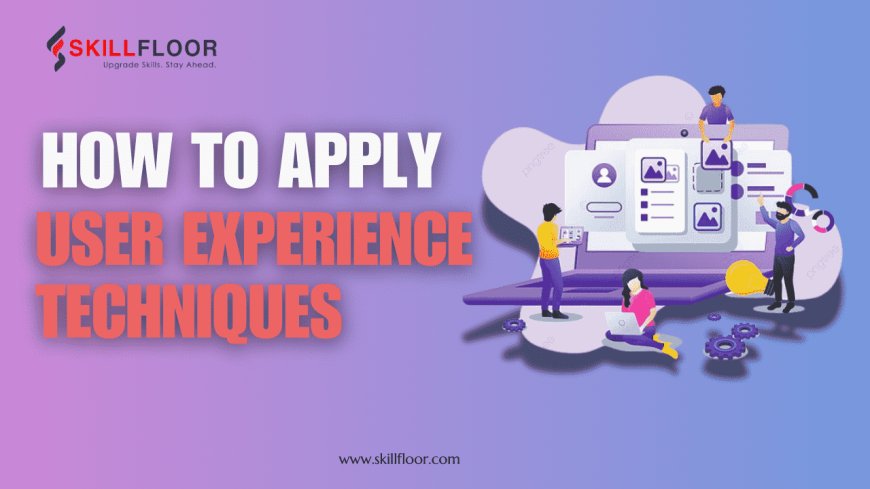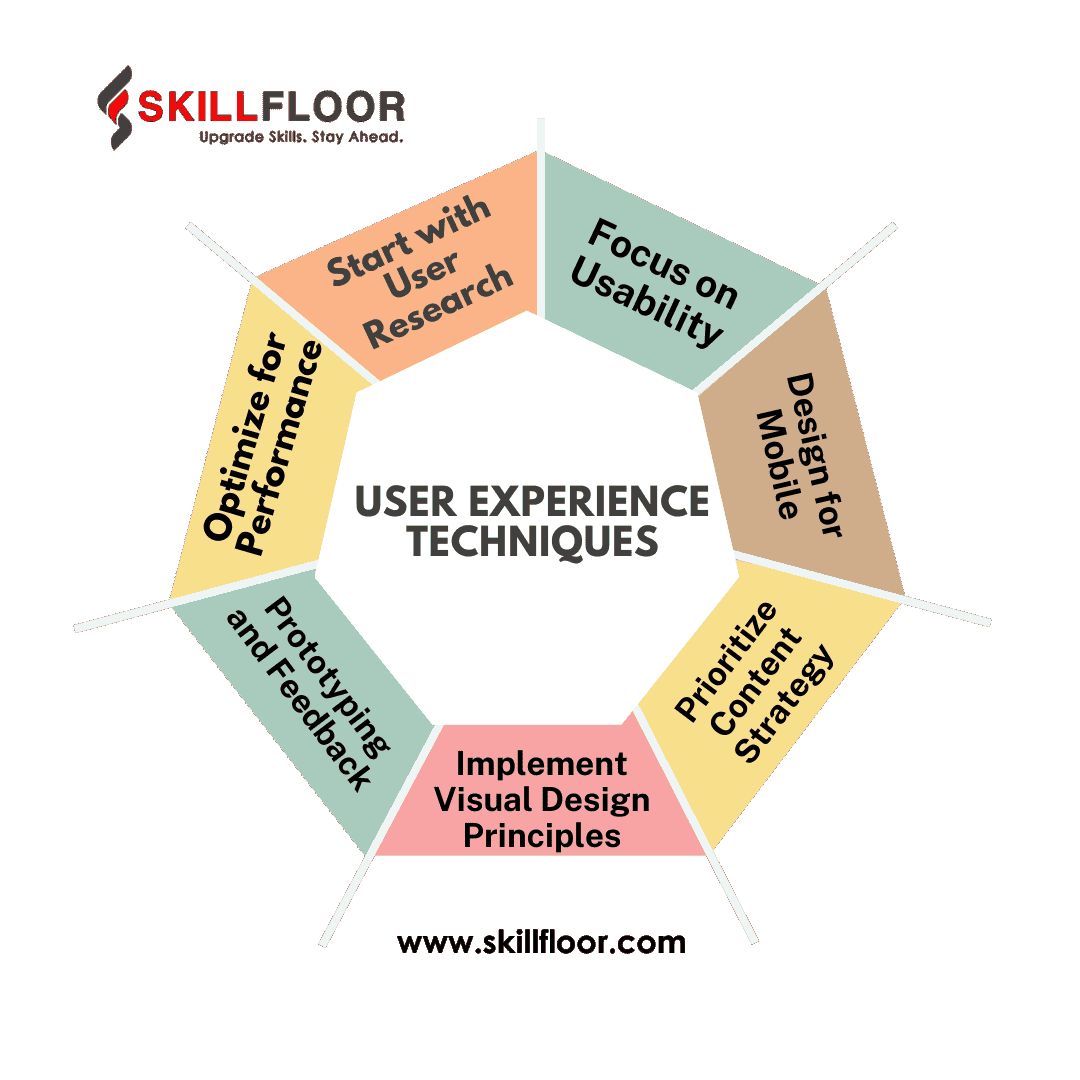How to Apply User Experience Techniques
Learn effective user experience techniques to enhance your website's usability and improve customer satisfaction. Apply UX strategies to boost engagement and conversions.

Hey, there! According to the user experience, managing through the internet can be either easy or difficult. Have you ever questioned why some websites and apps feel so natural while others frustrate you? The magic comes from utilizing User Experience (UX) strategies. We'll look at how you can use these strategies to make your website or app more user-friendly. We'll know everything from user-friendly to inclusive design.
Understanding User Experience Techniques
Before we get into the specifics, let's look over what User Experience Techniques are. UX is the process of designing goods that offer people meaningful and relevant experiences. This requires a thorough understanding of people, including their requirements, values, abilities, and limitations. It's about designing for people, making sure that every touchpoint and contact is as seamless and enjoyable as possible. Understanding is important for providing an excellent user experience. to look at the world through their perspective. What difficulties are they attempting to solve? What are their sore opportunities? Answering these questions will allow you to build solutions that in reality resonate with your target audience.
1. Start with User Research
The first step in applying User Experience Techniques is to understand your users. This means diving deep into user research to gather insights about who they are, what they need, and how they interact with your product.
-
Interviews and Surveys: Talk directly to your users to gather qualitative data about their experiences and expectations.
-
User Personas: Create detailed profiles of your typical users to guide your design decisions.
-
User Journey Mapping: Visualize the steps users take to achieve their goals with your product, identifying touchpoints and potential pain points along the way.
User research, user personas, user journey mapping, qualitative data, and user insights.
2. Focus on Usability
Usability is the foundation of good user experience. It’s about making sure your product is easy to use and that users can achieve their goals without unnecessary frustration.
-
Usability Testing: Observe real users as they interact with your product to identify any usability issues.
-
Simplified Navigation: Design clear and intuitive navigation structures that help users find what they’re looking for quickly.
-
Accessible Design: Ensure that your product is accessible to all users, including those with disabilities.
Usability testing, intuitive navigation, accessible design, and user goals.
3. Design for Mobile
In today’s Digital Marketing, mobile design is no longer optional—it’s essential. Many users will interact with your product on their smartphones or tablets, so it’s crucial to provide a seamless mobile experience.
-
Responsive Design: Create a design that adapts to different screen sizes and orientations, providing a consistent experience across devices.
-
Mobile-Friendly Navigation: Simplify navigation for smaller screens to ensure that users can easily access all the features they need.
-
Touch Interactions: Optimize your interface for touch inputs, making sure buttons and controls are easy to tap.
Mobile design, responsive design, touch interactions, mobile-friendly navigation.
4. Prioritize Content Strategy
Content is king, and in the context of UX, it’s vital to have a clear content strategy that aligns with your users’ needs and goals. Good content is not only informative but also engaging and easy to understand.
-
Content Inventory: Audit your current content to identify gaps and areas for improvement.
-
Content Planning: Develop a content strategy that outlines what content you need, how it will be created, and how it will be maintained.
-
User-Centered Content: Write and organize content in a way that speaks directly to your users and addresses their needs.
Content strategy, content planning, user-centered content, content audit.
5. Implement Visual Design Principles
The visual design of your product is the first thing users notice, and it plays an important role in their overall experience. Effective visual design goes beyond aesthetics—it enhances usability and creates a connection with users.
-
Consistent Branding: Ensure that your visual elements align with your brand identity and are consistent across all platforms.
-
Typography and Color: Use typography and color thoughtfully to enhance readability and create a visually appealing interface.
-
White Space: Embrace white space to create a clean, uncluttered design that allows users to focus on the content.
Visual design, consistent branding, typography, color, and white space.
Prototyping is a powerful way to test your ideas and get early feedback from users before you invest in full development. It allows you to refine your designs based on real user interactions.
-
Wireframes and Mockups: Create low-fidelity and high-fidelity prototypes to visualize your design concepts.
-
User Testing: Conduct usability tests with your prototypes to gather feedback and identify areas for improvement.
-
Iterative Design: Use the feedback from testing to make iterative improvements to your design, ensuring it meets user needs effectively.
Prototyping, wireframes, mockups, user testing, iterative design.

7. Optimize for Performance
Performance is a crucial aspect of user experience. A fast, responsive product keeps users engaged and satisfied, while slow performance can drive them away.
-
Page Load Speed: Optimize your website’s loading times to ensure quick access to content and features.
-
Responsive Interactions: Ensure that interactions and animations are smooth and don’t hinder the user experience.
-
Resource Management: Minimize the use of heavy resources that can slow down your product, such as large images or complex scripts.
Performance optimization, page load speed, responsive interactions, and resource management.
8. Test and Repeat
No product is perfect on the first try. Testing and iterating are critical steps in refining user experience techniques and ensuring your product meets user needs effectively.
-
Conduct Usability Testing: Regularly test your product with real users to identify issues and gather feedback. Use tools like UserTesting or Lookback to facilitate remote testing sessions.
-
Analyze User Behavior: Use analytics tools like Google Analytics or Hotjar to understand how users interact with your site or app. Look for patterns in their behavior that can highlight areas for improvement.
-
Implement A/B Testing: Test different versions of a page or feature to see which performs better. Tools like Optimizely can help you run A/B tests and gather data on user preferences.
By continuously testing and iterating, you can refine your user experience techniques
9. Measure and Improve
The work doesn’t stop once your product is live. Continuous measurement and improvement are key to maintaining a high-quality user experience. Use analytics to monitor how users interact with your product and identify areas for further enhancement.
-
Analytics and Metrics: Track key performance indicators (KPIs) such as user engagement, conversion rates, and drop-off points.
-
User Feedback: Collect feedback through surveys, reviews, and support interactions to understand user satisfaction.
-
Continuous Improvement: Regularly update and refine your product based on user data and evolving best practices.
Analytics, user feedback, continuous improvement, key performance indicators. keep your product aligned with user expectations.
Applying User Experience Techniques to your digital efforts can change how customers interact with your products. By focusing on their needs, optimizing their path, and constantly improving based on feedback, you can develop experiences that are not only useful but also engaging. Begin with extensive user research, focusing on usability and mobile design, creating required content, and constantly keeping performance and feedback in mind. With these tactics, you'll be well on your way to providing amazing user experiences that keep customers returning for more.






























































